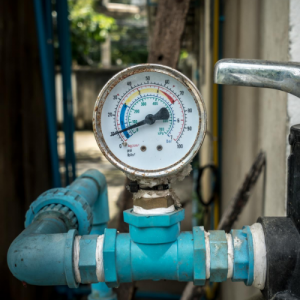Just how do you really feel on the subject of Dealing with Low Water Pressure in Your Home?

Low tide stress in your house can be a frustrating issue, impacting every little thing from bathing to washing recipes. If you're experiencing weak water flow, there are several feasible reasons and services to check out. In this overview, we'll talk about common factors for low water pressure and functional steps to attend to the issue successfully.
Intro to Low Tide Stress
Low water pressure takes place when the flow of water from your faucets, showers, and other fixtures is weak than usual. This can make everyday tasks much more challenging and much less reliable. Comprehending the root causes of low tide stress is vital to discovering the ideal service.
Typical Causes of Low Water Pressure
Pipeline Obstructions
With time, pipelines can end up being obstructed with natural resource, sediment, or particles, limiting the flow of water. This is a common issue in older homes with galvanized steel pipes.
Corrosion
Corrosion within pipes can lead to leakages and minimized water stress. Corrosion build-up can tighten water flow, specifically in aging plumbing systems.
Faulty Stress Regulatory Authorities
Pressure regulators are responsible for keeping regular water stress in your home. If they malfunction, it can cause low tide pressure or irregular circulation throughout the house.
Municipal Water System Issues
Occasionally, the trouble lies outside your home. Community supply of water concerns, such as main line leaks or upkeep work, can briefly reduce water stress in your area.
How to Detect Low Water Stress
Checking Faucets and Components
Start by testing the water pressure at various faucets and fixtures throughout your home. If the concern is separated to details areas, it might indicate local issues.
Examining Pipes
Inspect visible pipelines for indications of leakages, deterioration, or blockages. Take note of any type of uncommon audios, such as banging or rattling pipes, which might show concerns within the plumbing system.
Consulting with a Plumber
If you're not able to identify the reason for low water stress, take into consideration working with a professional plumber to conduct a thorough examination. They can identify underlying problems and recommend appropriate options.
Do It Yourself Solutions to Repair Low Tide Pressure
Cleansing Aerators and Showerheads
Natural resources can gather in aerators and showerheads, minimizing water circulation. Eliminate and clean up these elements routinely to improve water pressure.
Flushing Water Heater
Sediment buildup in the water heater can limit circulation and minimize performance. Flushing the tank regularly helps remove debris and keep ideal performance.
Examining Stress Regulator
Guarantee that the pressure regulatory authority is operating appropriately. Changing or replacing the regulatory authority can aid bring back proper water pressure throughout your home.
Clearing Up Clogs in Piping
For small blockages, try making use of a plumbing snake or chemical drain cleaner to clear blockages in pipes. Be cautious when making use of chemicals and comply with security guidelines.
When to Call a Specialist Plumber
If DIY efforts fall short to fix the issue or if you believe considerable plumbing issues, it's ideal to look for assistance from a qualified plumber. They have the experience and devices to address intricate issues securely and efficiently.
Preventive Measures to Preserve Water Stress
Regular Upkeep
Arrange routine maintenance for your plumbing system to prevent concerns such as rust, leakages, and blockages. Addressing small problems early can assist stay clear of more substantial repair work later.
Mounting a Stress Booster
Take into consideration mounting a pressure booster pump to boost water stress in locations with constantly low flow. This can be particularly advantageous for multi-story homes or properties with high-demand components.
Monitoring Water Usage
Be mindful of water usage behaviors and avoid ill-using the plumbing system. Straightforward changes, such as shocking showers and laundry loads, can aid maintain adequate water pressure.
Final thought
Handling low water stress can be frustrating, however determining the underlying causes and implementing appropriate solutions can restore ideal flow throughout your home. Whether it's cleaning up aerators, evaluating pipelines, or consulting with a plumber, taking proactive steps can guarantee a consistent supply of water for your everyday needs.
FOUR WAYS TO FIX LOW WATER PRESSURE NOW
Turning on a shower or faucet only to find the water comes out in a sad, slow drizzle is never a good feeling. How exactly are you supposed to wash a pan or take a quick shower when it takes 10 minutes just to rinse off a little soap? The good news is that when your water pressure is bad, there's always a cause: typically one that can be easily fixed. Here are some of the most common causes of low pressure and what you can do to fix the issue:
DEBRIS AND MINERAL DEPOSIT BUILDUPS
If you notice low water pressure from just one or two of the fixtures in your house, the problem likely has to do with debris buildup. Water is full of minerals and other debris, all of which can accumulate in your pipes and on your fixtures. This can cause a blockage that affects how much water flows through. To fix this, try filling a small plastic bag with white vinegar, and use a rubber band to hang it around your showerhead or faucet. Let the head of the fixture soak for a few hours, and the vinegar should loosen the deposits.
WATER LEAKS
Leaks are another common cause of low water pressure. If water is flowing out of your plumbing through a hole or crack before it can reach your fixture, the pressure coming out of the faucet or showerhead will be lower. A plumbing professional is your best bet for finding and repairing a leak in your water supply pipes.
Leaks are another common cause of low water pressure. If water is flowing out of your plumbing through a hole or crack before it can reach your fixture, the pressure coming out of the faucet or showerhead will be lower. A plumbing professional is your best bet for finding and repairing a leak in your water supply pipes.
FOUR WAYS TO FIX LOW WATER PRESSURE NOW
Turning on a shower or faucet only to find the water comes out in a sad, slow drizzle is never a good feeling. How exactly are you supposed to wash a pan or take a quick shower when it takes 10 minutes just to rinse off a little soap? The good news is that when your water pressure is bad, there's always a cause: typically one that can be easily fixed. Here are some of the most common causes of low pressure and what you can do to fix the issue:
DEBRIS AND MINERAL DEPOSIT BUILDUPS
If you notice low water pressure from just one or two of the fixtures in your house, the problem likely has to do with debris buildup. Water is full of minerals and other debris, all of which can accumulate in your pipes and on your fixtures. This can cause a blockage that affects how much water flows through. To fix this, try filling a small plastic bag with white vinegar, and use a rubber band to hang it around your showerhead or faucet. Let the head of the fixture soak for a few hours, and the vinegar should loosen the deposits.
WATER LEAKS
Leaks are another common cause of low water pressure. If water is flowing out of your plumbing through a hole or crack before it can reach your fixture, the pressure coming out of the faucet or showerhead will be lower. A plumbing professional is your best bet for finding and repairing a leak in your water supply pipes.
Leaks are another common cause of low water pressure. If water is flowing out of your plumbing through a hole or crack before it can reach your fixture, the pressure coming out of the faucet or showerhead will be lower. A plumbing professional is your best bet for finding and repairing a leak in your water supply pipes.
A VALVE ISSUE
If you have low water pressure throughout your home, check your main shut-off valve to make sure it's completely open. You may also want to see if there's a pressure-reducing valve installed. If there is, have a plumber help you adjust the settings to get the pressure you're looking for.
OTHERS USING WATER
Believe it or not, your low water pressure could be caused by your neighbors. If you notice low pressure at certain times of day, it may be because you and the people living next to you have similar schedules - when everyone is showering at the same time, the pressure will be lower in every home. Low pressure throughout the neighborhood may also be caused by an issue with your municipal water supply. If that's the case, call the supplier to see if they're working on the issue.
https://www.rotorooter.com/blog/water-leaking/low-water-pressure-fixes/

I found that page on 10 Reasons for Low Water Pressure in Your House while doing a lookup on the search engines. Do you know about another person who is looking into the topic? Why not promote it. Bless you for being here. Kindly come visit our site back soon.
Call Today